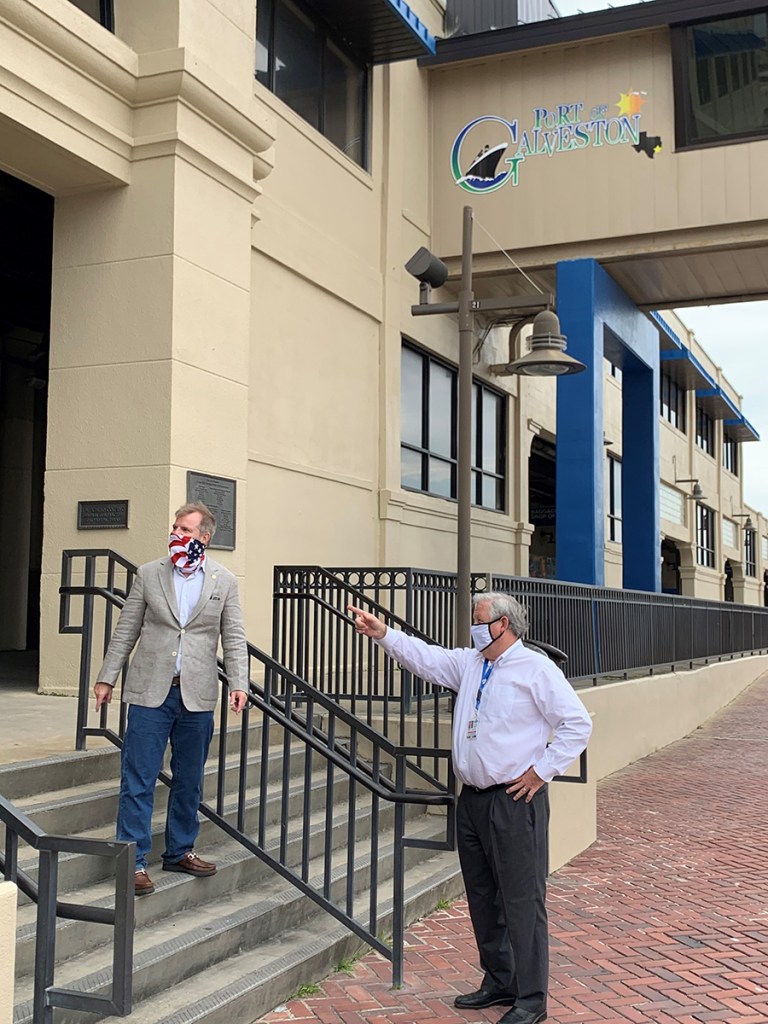Commissioner Louis Sola conducted a field visit to Galveston, Texas last week as part of his ongoing work leading the Fact Finding 30 examination of COVID-19 related impacts to the passenger cruise industry.
Much like all other locations examined to date as part of the Fact Finding, Galveston Wharves has been adversely affected by the cessation of cruise ship operations. Galveston is the fourth most popular cruise port in North America, and more than 65% of the port’s annual revenue is tied to serving the passenger vessel sector.
In a series of meetings with port executives, longshore labor leadership, and the local Coast Guard sector, Commissioner Sola was briefed on economic and operational impacts caused by the lost cruise business. The meetings also showcased the comprehensive steps the Galveston port community is taking to prepare for the safe resumption of operations.
“There has been a significant economic impact to Galveston, both the port and the community have been adversely affected from the loss of the cruise business. The port and its partners are committed to working cooperatively to resume operations in a safe and responsible manner at the appropriate time. I was especially impressed that the port is going beyond simply planning, they are conducting exercises with all their partners to test their preparations. The practices and protocols they have in place make them ready to safely accept cruise passengers as soon as the ships are ready to sail,” said Commissioner Sola.
Commissioner Sola was apprised about how the port’s Infectious Disease Response Team facilitates ongoing discussion and coordination among more than one dozen different local, state, and federal agencies. The team is being used to ensure awareness of interagency protocols for handling infectious diseases in the Houston/Galveston area and to plan for the safe resumption of cruise operations from a public health perspective. The efforts of the team include the use of tabletop exercises to test plans and systems.
The port shared how it has worked with the Galveston County Health District and the University of Texas Medical Branch to establish debarkation procedures for any passengers or crew showing symptoms of infection.
Port officials provided an accounting of investments they have made to upgrade cruise terminals to guard passengers against exposure to pathogens. The port has established screening and quarantine locations within each of its two cruise terminals. Additionally, it has upgraded to touchless bathroom fixtures, installed plexiglass shields in customer service areas, and enhanced air handling systems. The port has also established new protocols that will limit physical proximity between passengers while in Galveston’s cruise terminals.
Further findings about the economic impact to Galveston will be included in an Interim Report, to be released later, that will also examine New Orleans and Mobile.

Commissioner Louis Sola (left) and Rodger Rees, Port Director/CEO Port of Galveston

